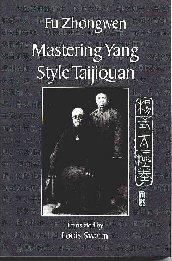AEA Tai Chi Club
Our club primarily practices Yang Style T'ai Chi Ch'uan and related Qigong forms. Our members and friends also practice Wu Style, Chen style T'ai Chi Ch'uan, Ba Gua Zhang, Xing Yi Quan and Yi Quan.

RESOURCES
Internal Kung Fu
Chinese Kung Fu: Tai Chi Chuan (Taijiquan), Hsing I Chuan (Xingyiquan), and Pa Kua Chang (Baguazhang). These are sometimes characterized as Tantric, yoga-like martial arts and are often linked with Taoist practices or the Wudang Mountain temple. This group can be compared with External Chinese Kung Fu (including the Shaolin and all of its subsets) that are characterized by speed or strength and are often linked with Buddhist practices or the Song mountain temple or Emei mountain temple.
kung fu starts with traditional philosophical ideas of the Five Elements and Eight Trigrams. Xingyiquan is an art based on the Five Elements and Baguazhang is based on the Eight Trigrams. An older name for Tai Chi Chuan is Eight Doors and Five Steps, which combines both the Eight Trigrams and the Five Elements. While this viewpoint is not much help for a novice attempting to gain some basic understanding of these martial arts, it is the foundation of the arts.
Books by Our Friends
Yang Style Tai Chi Chuan
Louis Swaim has put together two great translations of Yang Style books.
The first is a Yang Chengfu picture book with applications.
THE ESSENCE AND APPLICATION OF TAIJIQUAN
The second is a comprehensive Yang style book from the Shanghai teacher Fu Zhong Wen, brother-in-law of Yang Chengfu, which was the practice manual for our club for many years.
MASTERING YANG STYLE TAIJIQUAN
We also recommend the book (left) entitled The Philosophey of Tai Chi Chuan by Freya and Martin Boedicker of the Ma Jiang Bao's Wu style group, European Association for Traditional Wu Style Tai Chi Chuan. (Ma Jiang Bao is the son of Ma Yueh Liang and Wu Ying Hua, and grandson of Wu style founder Wu Jian Qian.) Martin Boedicker has a number of books out and they are quite good.
The Philosophy of Tai Chi Chuan
Tai Chi Chuan in the History of Chinese Martial Arts

Xingyi Quan or Hsing I Ch’uan is one of the major internal Chinese martial arts (and thought to predate the creation of both Tai Chi Ch’uan and Bagua Zhang). These internal Chinese martial arts share a yoga-like emphasis on body structure and dynamics as well as mental control of gross and fine motor skills and very intentional movement.
Xing refers to form or shape; Yi refers to mind or intent. Quan (fist) denotes a method of unarmed combat. The name suggests that the practitioner's internal processes harmonize and coordinate the external movement. Although Xingyi Quan is generally viewed as an aggressive art, it shares meditation-in-movement derived health benefits with the other Chinese Internal martial arts, including reduced stress, increased stamina and attention span as well as improved strength and balance.
The art of Xingyi Quan is divided into two main systems: the Five-Elements and Twelve Animals. The beginning Five Elements practice focuses on coordinating the motions of entire body into one focused movement. Xingyi Quan was based on battlefield spear techniques and designed to subdue an opponent in the shortest amount of time with the most efficient use of power.
Baguazhang, an internal Chinese martial art, employs circle walks, palm changes, body spinning and turning, and rapid changes in direction. The practitioner walks the circle holding various postures and executing palm changes. It cultivates a flexible, fluid yet springy type of movement. Bagua Zhang is based on the theory of continuously changing in response to the situation at hand in order to overcome an opponent with skill rather than brute force.
http://www.smilingtiger.net/catalog.htm A collection of English translations of classic kung fu books at Joseph Crandall's Smiling Tiger web site. See, for example, a translation of the
or
Jiang Rong Qiao's introduction to Xingyi Quan, the Motherfists or XINGYI MU QUAN


